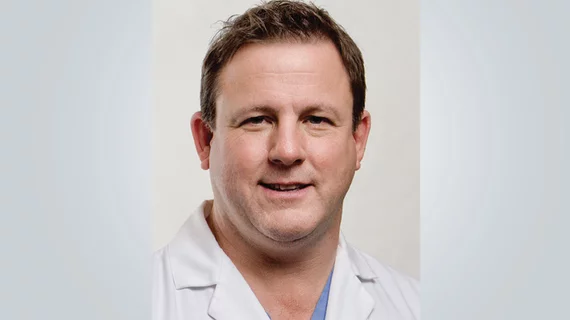Machine learning tools will support physicians’ efforts to deliver better patient outcomes at lower costs.
As health systems grow, integrate and generate unprecedented amounts of data, the need to derive actionable knowledge from those data grows in parallel. Simultaneously, growth is occurring in the size and scope of physician groups. In some cases, physician groups have expanded to hundreds, even thousands, of clinicians who may order tens of thousands of cardiac diagnostic tests annually. In these situations, the ability to safely and effectively monitor every component of critical tests is beyond human reach. How do we know? Consider the following clinical scenario that plays out regularly in hospitals and health systems across the U.S.
Two patients of identical age and background develop severe aortic stenosis. One patient receives timely follow-up and treatment resulting in excellent symptom relief and years to enjoy her family. Her care generates a bill of $70,000. The second patient has a delay in follow-up only to find herself urgently admitted to the intensive care unit with congestive heart failure. She develops complications and dies after a prolonged ICU stay. The cost for this unfortunate outcome is more than $500,000.
In addition to yielding poor outcomes for patients as well as high costs, scenarios like the second patient’s compromise the financial health of organizations responsible for populations as well as payers. With today’s thin margins in healthcare, these types of mistakes threaten the lives of patients and organizations.
24/7 support via machine
What is the solution? It’s not manual surveillance of millions of important data points, which would require human resources resembling a small army and would be cost-prohibitive. Instead, a unique, real-time, cost-effective solution could be found in machine learning tools. Such tools function 24/7; require no vacations or benefits; and, by screening, prioritizing and linking patients to proper care, can pay for themselves in weeks.
Machine learning tools represent a semiautomated method of extracting knowledge from large sets of data. Structured and unstructured data are fed into an algorithm, which is then trained by a series of informed decisions to identify patterns in the data. These patterns can then reveal actionable knowledge. The more data the algorithm receives, the more accurate its decisions will become. These same methods—which are being used today to help us select online purchases and detect credit card fraud—can be employed to detect early lung cancer or heart valve disease (Comput Methods Programs Biomed 2018, Mar;156:A1; Int J Comput Math 2013;90[8]:1734-59).
In a healthcare system, machine learning tools can support disease identification and referral pattern management, and they can mitigate diagnostic and therapeutic delay.
“We don’t have those problems,” it’s tempting to say. But we do, as evidenced by countless examples of the consequences of under- or delayed treatment in the medical literature. Recent studies found a three-fold higher rate of all-cause mortality and a four-fold increase in hospital admissions for heart failure in patients whose asymptomatic severe aortic stenosis went untreated vs. those who received either surgical or transcatheter valve replacement (J Am Coll Cardiol 2016;67[19]:2263-88; J Am Coll Cardiol 2015;66[25]:2827-38).

A value proposition
Machine learning, artificial intelligence and other algorithm-based tools will be essential for organizations to deliver the best value in healthcare. Whether it is the analysis of medical images for diagnosis, unsupervised topographical data analysis of patient clusters or supervised machine learning tools to solve a specific problem, artificial intelligence tools have arrived, and they are advancing quickly to deliver value to patients, healthcare organizations and payers.
Machine learning will not replace physicians. Rather, these powerful tools should be guided by physician intellect and augment the excellent care delivered by physicians every day. By ensuring timeliness of diagnosis and proper connectivity within the matrix of a healthcare organization, machine learning has the potential to improve quality and drive organizational growth at a fraction of the cost associated with other strategies. In an increasingly complex environment, better patient outcomes at lower costs are a solution we all can live with.
Daniel O’Hair, MD, is a cardiovascular surgeon at Boulder Heart in Boulder, Colo. He consults in the field of artificial intelligence.

